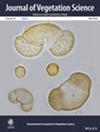Exploring Priority and Year Effects on Plant Diversity, Productivity and Vertical Root Distribution: First Insights From a Grassland Field Experiment
Abstract
Question
The order of arrival of plant species during community assembly can affect how species interact with each other. These so-called priority effects can have strong implications for the structure and functioning of plant communities. However, the extent to which the strength, direction, and persistence of priority effects are modulated by weather conditions during plant establishment (“year effects”) is not well known.
Location
Niederhaverbeck, Bispingen, Germany.
Methods
We present the first results from a field experiment initiated in 2020 in Northern Germany to test how plant functional group (PFG) order of arrival and the year of initiation of an experiment interactively affect the structure and functioning of nutrient-poor dry acidic grasslands, both above and below ground. To do this, we established the same experiment, manipulating the order of arrival of forbs, grasses, and legumes on the same site, but in different years representing different weather conditions.
Results
We found that time since establishment was a stronger driver of plant community composition than PFG order of arrival and year of initiation. PFG order of arrival effects on plant diversity evolved over time and depended on the year of initiation of an experiment. Year of initiation, not PFG order of arrival, was the strongest driver of aboveground community productivity. Although we did not find an effect of PFG order of arrival on root productivity, it had a strong impact on the vertical distribution of roots. Communities where grasses were sown first rooted more shallowly than communities in which forbs or legumes were sown first.
Conclusions
In experimental dry acidic grassland communities, community composition and productivity are shaped by time since establishment and initial weather conditions, rather than PFG order of arrival (6-week sowing interval). Importantly, our results demonstrate that manipulating PFG order of arrival is possibly an effective restoration measure to alter vertical root distribution towards more deep-rooting communities when sowing forbs or legumes first. This in turn could benefit dry grasslands on sandy soils during periods of water deficit.


 求助内容:
求助内容: 应助结果提醒方式:
应助结果提醒方式:


